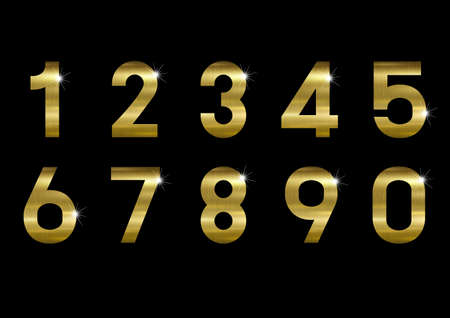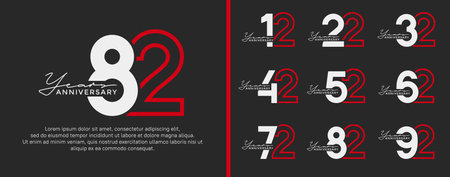The Enchanted Tapestry: A Glance at British Wedding Superstitions
Step softly into the realm of British weddings, and you’ll find yourself woven into an enchanted tapestry of customs and beliefs, each thread glittering with echoes from the past. Superstitions—those age-old whispers passed down through generations—continue to swirl around modern celebrations, casting their gentle influence over brides, grooms, and families alike. Why do these tales endure in an age of reason? Perhaps it’s our shared yearning for a blessing, a touch of luck, or simply the comfort of tradition as two souls unite. British wedding superstitions are far more than charming quirks; they are living folklore, alive in every “something old, something new” tucked into a bride’s ensemble or in the careful choice of a wedding date. As we journey deeper into this world, let us explore not only what these beliefs are but also why, in the heart of the United Kingdom, such magic still lingers on love’s most celebrated day.
Symbols of Luck: What Brides Wear and Carry
In the heart of every traditional British wedding, a tapestry of cherished symbols weaves its magic—each one carefully chosen to invite fortune and ward off misfortune. Many of these customs have been passed down through generations, their origins steeped in folklore and collective hope. Let us unravel the deeper meanings behind some of Britain’s most iconic bridal tokens.
The Rhyme That Endures: ‘Something Old, Something New’
Perhaps no superstition is more quintessentially British than the rhyme: “Something old, something new, something borrowed, something blue—and a silver sixpence in her shoe.” Each element carries its own spiritual resonance:
Token |
Meaning |
Origin |
|---|---|---|
| Something Old | Symbolises continuity and connection to family lineage. | Victorian England; honours ancestry and enduring love. |
| Something New | Represents optimism for the future and new beginnings. | Became popular during the Industrial Revolution as society shifted towards progress. |
| Something Borrowed | Blesses the bride with happiness from another’s good fortune. | Borrowed from a happily married friend or relative for luck. |
| Something Blue | Signifies fidelity and purity. | The colour blue has been associated with weddings since ancient Rome. |
| A Sixpence in Her Shoe | Invites prosperity and wealth into the marriage. | A Victorian coin custom, particularly beloved in England. |
The Horseshoe: A Crescent of Good Fortune
No British wedding feels quite complete without the lucky horseshoe. Traditionally gifted to brides by well-wishers—often children—the horseshoe is carried (open end upwards) as a talisman for lifelong happiness. This symbol harks back to pagan times when iron was thought to repel evil spirits, and its crescent shape echoed the moon’s promise of fertility and protection.
Cultural Nuances Across Regions
The beauty of these superstitions lies in their subtle regional variations: Scottish brides may tuck heather into their bouquets for luck, while Welsh ceremonies might include love spoons as tokens of affection. Yet at every turn, these humble charms reflect a deeper yearning—for joy, abundance, and an unbreakable bond between two souls embarking on life’s greatest adventure together.

3. Unseen Protectors: Ward Off Evil and Invite Blessings
In the heart of every British wedding, there is a subtle dance between tradition and the unseen—an intuitive trust in ancient rituals to shield love from misfortune and sprinkle the path ahead with blessings. These customs, woven deep into British folklore, are not mere relics of the past; they continue to shape the rhythm of modern ceremonies, whispering promises of prosperity and happiness.
The Veil: A Mystical Shield
Long before veils became a symbol of bridal beauty, they were believed to serve as protective barriers against envious spirits lurking on the wedding day. By concealing the bride’s face, this delicate fabric was thought to confuse mischievous forces determined to thwart her joy. Even today, the gentle lift of the veil at the altar echoes an ancient hope—that love can emerge untouched by negativity, unveiled in all its purity.
The Lucky Chimney Sweep
Perhaps nowhere is the spirit of unseen guardians more tangible than in the cherished tradition of inviting a chimney sweep to weddings. Rooted in a tale from King George II’s era, where a sweep saved the monarch’s life and was rewarded with royal favour, this custom endures as a symbol of good luck. When newlyweds are greeted by a sooty-handed sweep—sometimes with a hearty handshake or even a kiss—it is believed that prosperity and fortune follow their union like loyal companions.
Tossing Confetti: Seeds of Joy
No British wedding feels complete without a flurry of confetti fluttering through the air—a joyful echo of ancient rites when guests would shower couples with rice or flower petals. This colourful cascade is more than just celebration; it is an intuitive blessing, each piece symbolising fertility, abundance, and bright beginnings. Whether crafted from biodegradable petals or traditional paper, confetti connects every guest to the couple’s future, sowing invisible seeds of happiness as they step into married life.
So within these rituals—veiled faces, lucky sweeps, and showers of confetti—the spirit world and the everyday meet. They remind us that love’s journey is never walked alone: unseen protectors linger at every threshold, invited by belief and bound by story, ensuring that British weddings remain enchanted celebrations rooted in centuries-old wisdom.
4. Ominous Omens: What to Avoid on the Day
On a day brimming with anticipation and joy, British weddings are also shadowed by certain superstitions and taboos—ancient whispers guiding couples away from ill fortune. To tread carefully is to honour both tradition and the collective wisdom passed down through generations. Here’s a look at some of the most enduring omens that couples are cautioned to avoid:
The Bride Unseen: A Veil of Mystery
One of Britain’s most cherished beliefs insists it is bad luck for the groom to see his bride before she walks down the aisle. This custom, rooted in centuries-old arranged marriages, was meant to prevent cold feet or second thoughts. Today, couples might playfully avoid each other all morning, preserving an air of mystery and anticipation until that magical moment beneath the archway.
Rainy Skies: Showers of Fortune or Fears?
Weather in the UK is famously unpredictable, making wedding-day rain an ever-present worry. While some believe rain brings blessings—“tying the knot” tighter—others see it as an inauspicious sign. British folklore is full of weather-related sayings, and though many guests arrive with umbrellas in tow, the hope is always for clear skies.
Dropping the Ring: A Slip of Fate
The wedding ring itself holds deep symbolic meaning, representing eternal love and unity. Dropping it during the ceremony is considered a dire omen—some say it foretells misfortune or discord in the marriage. This belief often leads to nervous hands and careful choreography as rings are exchanged!
Common British Wedding Taboos & Warnings
| Superstition | Belief/Warning | Cultural Root |
|---|---|---|
| Bride seen by groom pre-ceremony | Brings bad luck; may jinx the union | Arranged marriage traditions; fear of changed minds |
| Rain on wedding day | Mixed: Some view as lucky, others as unlucky | Folklore around cleansing and fertility versus gloom |
| Dropping the ring | A sign of future misfortune or marital strife | Anxieties about mishaps symbolising relationship troubles |
| Wearing pearls | Pearls represent tears; thought to bring sorrow | Sorrowful symbolism in Victorian-era jewellery |
| Crying before ceremony (by bride) | Tears wash away bad luck; positive spin if before vows | Old wives’ tales offering comfort for pre-wedding nerves |
A Living Tapestry of Belief
These omens remind us that even in modern times, British weddings remain entwined with superstition and storytelling. Whether observed out of reverence or jest, these customs invite couples and guests alike to step softly between worlds—the known and the mysterious—on their journey into matrimony.
5. Charmed Beginnings: First Steps and Post-Ceremony Rituals
In the enchanting world of British weddings, every movement is woven with meaning—especially the bride’s first steps on her wedding day. Tradition whispers that leaving the house with her right foot first ensures a journey blessed by fortune and harmony. This seemingly simple act is a subtle invocation of luck, echoing through generations who believed that even the smallest detail could sway fate in their favour.
The route to the church is another theatre for superstition to play out. In rural villages and bustling cities alike, some families insist on taking an indirect path, avoiding meeting funerals or crossing paths with certain animals, especially black cats or crows, which are thought to be omens. The winding journey not only adds a sense of anticipation but also symbolically confuses any lurking spirits or ill wishes trailing behind.
Once at the threshold of the ceremony venue—be it a stately home, ancient church, or humble registry office—the rituals deepen. Crossing the threshold together as newlyweds is more than just a physical act; it’s a spiritual leap into shared destiny. In some regions, it’s customary for the groom to carry the bride over the threshold after the ceremony, a gesture believed to ward off evil spirits lying in wait beneath doorways and to ensure a lifetime free from misfortune.
These cherished customs might seem quaint in our modern age, yet they pulse with symbolic power. They offer reassurance—a sense that love can be protected by ritual and that happiness can be courted by paying homage to ancestral wisdom. In every careful step and chosen route, we find echoes of those who walked before us, weaving their hopes into the very foundations of marriage itself.
6. Echoes from the Past: Tracing the Roots of British Wedding Beliefs
Step softly into the mists of time, and you’ll discover that every British wedding superstition is a whisper from centuries gone by—a living echo of beliefs cherished by our ancestors. These rituals, which we so fondly weave into modern ceremonies, have their origins deep within the folklore and ancient customs of these isles.
The Tapestry of Folklore
From druids honouring the turning seasons to Victorian romantics seeking divine favour, British weddings have always been imbued with symbolism. The tradition of carrying “something old, something new, something borrowed, something blue” is not merely a quaint rhyme; it’s an interlacing of hope, protection, and continuity—each token a talisman against misfortune and a blessing for joy.
Roots in Ritual and Story
Many superstitions grew from the fertile ground of pagan rites. For example, confetti once took the form of grain or petals, thrown to invoke fertility spirits and ensure abundance. Jumping over the broomstick—still popular in some circles—echoes pre-Christian unions where couples leapt together into their new life. Even the bride’s veil can be traced back to ancient times, when it was believed to shield her from envious spirits lurking in wait.
The Living Thread in Modern Weddings
What is most enchanting is how these ancient beliefs continue to shape contemporary British nuptials. Couples may not always know the full story behind each ritual, yet by incorporating them—from lucky horseshoes to sixpences in shoes—they are joining a timeless dance. In every bouquet tossed and every bell rung, there lingers a sense of connection: a reminder that love has always been celebrated with hope, caution, and a dash of magic on this storied land.


